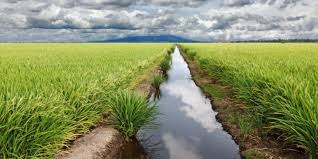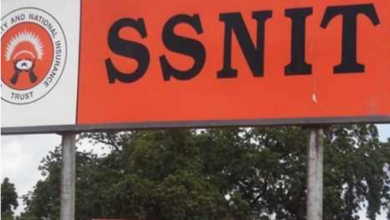News
MoFA to construct small earth dams, rehabilitate irrigation schemes

The Ministry of Food and Agriculture (MoFA) is to construct small earth dams and rehabilitate three irrigation schemes at Weta, Kpong and Tanoso in the Volta, Eastern and Ashanti regions this year.
The intervention which is aimed at enhancing food security is expected to create some 45,000 direct and indirect jobs through the production of cereals and vegetables projected to raise an estimated GH¢489 million per year.
Work on the irrigation schemes is being funded by the World Bank.
The projects are to be supervised by the Ghana Irrigation Development Authority (GIDA), an agency of MoFA.
Interventions
The Chief Executive of GIDA, Richard Oppong-Boateng, who made this known to the Daily Graphic in Accra, said in 2023, the authority designed 19 small earth dams and handed over seven sites for the construction of small earth dams for an all-year-round irrigated agricultural production.
Work on the remaining 12 sites, he said, were being finalised, adding “these dams would be developed to store water for all-year-round irrigated agriculture production, livestock watering and aquaculture development”.
The chief executive also said that this year, GIDA was conducting site selection and preliminary designs and cost of infrastructure of 35 sites to be located in the Northern, Upper West, Upper East, Savannah, North East, Oti, and Volta regions where irrigation infrastructure would be constructed in 2024 and 2025.
He said the irrigable area to be developed for the earth dam was 500 hectares which would be allocated to more than 1,000 smallholder farmers, while a total of 10,000 tons of cereals and 18,000 tons of vegetables are expected to be produced at a projected value of over GH¢165.03 million per year.
On the rehabilitation of the three irrigation schemes, Mr Oppong-Boateng said GIDA was providing technical support with design review, contract management and construction supervision of irrigation and drainage infrastructure.
In Weta, 880 hectares of irrigable land would be developed, while in Kpong and Tanoso, 4,400 and 120 hectares would be developed.
“These three schemes are expected to provide a total of about 15,000 direct and 25,000 indirect jobs in the value chain of crops produced, and about 53,000 tons of rice and 5,000 tons of vegetables with a projected value of GH¢324.56 million per annum,” he added.
Mr Oppong-Boateng further said that the authority was supervising the rehabilitation of the Vea water supply dam and an irrigation project in the Bongo District in the Upper East Region.
“Out of the 16 million cubic metres of water stored in the reservoir,1.64 million cubic metres every year is distributed to the people.
“About 3,500 tons of rice and 30,000 tons of vegetables valued at GH¢ 211.03 million per annum is produced on the scheme,” he said.
Green energy
Mr Oppong-Boateng said that in order to maximise profit, alternative sources of energy such as solar (Solar-grid hybrid or off grid) must be integrated into the energy mix in irrigation schemes.
He said two solar-grid energy projects had been successfully piloted on two irrigation schemes at Aveyime through a partnership between
Water Users Association and China Geo-Engineering Limited and at the Dawhenya irrigation schemes.
Mr Oppong-Boateng said that this had significantly helped to reduce the monthly energy bill of the Aveyime and Dawhenya irrigation schemes.


